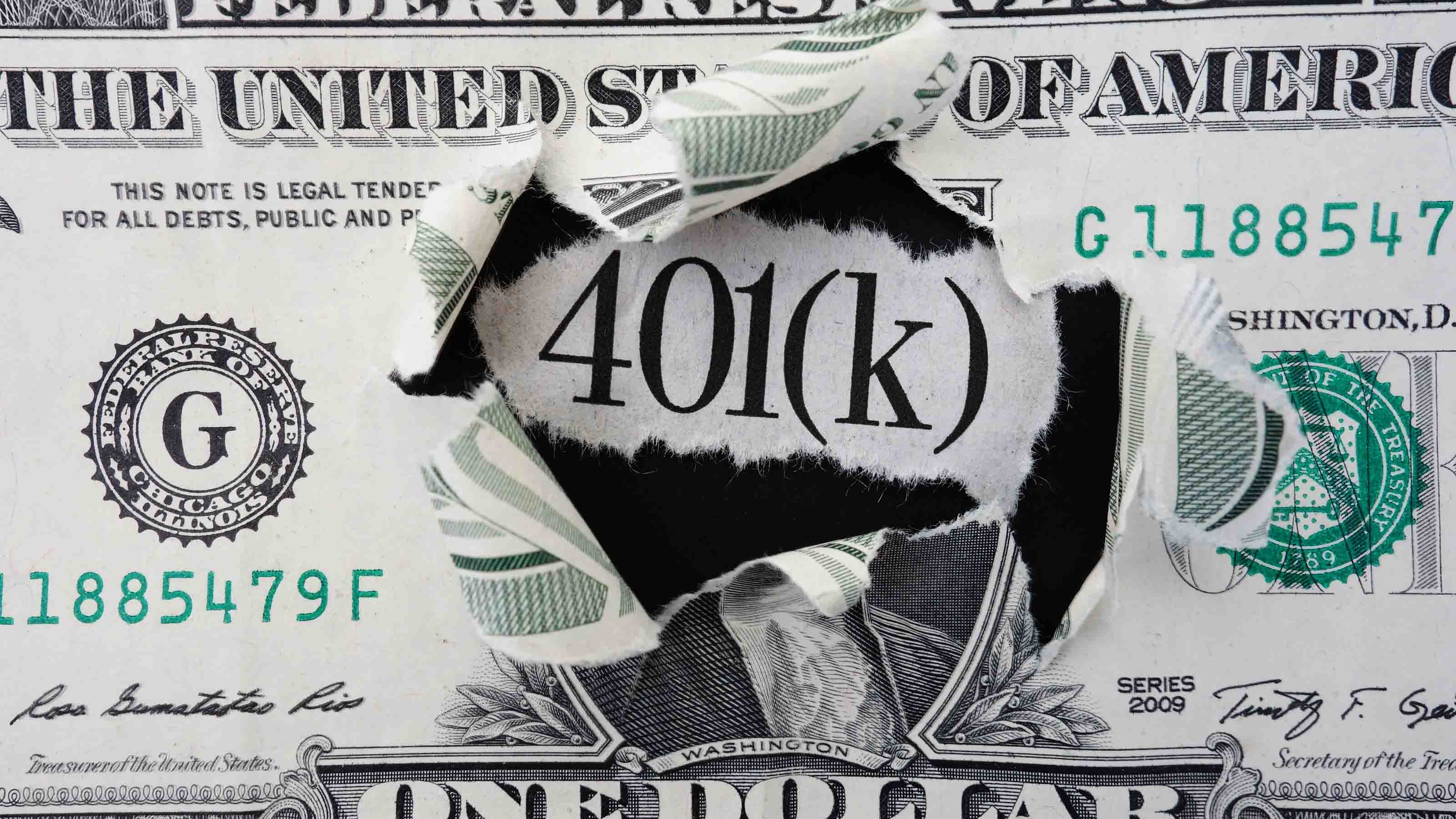401(k) Contribution Limits Rising Next Year
Workers saving for retirement have a reason to rejoice over the 401(k) contribution limits for 2022 and can expect even more next year.

Using a 401(k) account, if your employer offers one, is one of the best and most tax-friendly ways to build a nest egg. You should start saving in a 401(k) account as soon as possible, though the IRS limits how much you can contribute each year.
The good news is contribution limits for 2022 are up from last year and are projected to go even higher next year as a consequence of inflation.
401(k) Contribution Limits
Workers who are younger than age 50 can contribute a maximum of $20,500 to a 401(k) in 2022. That’s up $1,000 from the limit of $19,500 in 2021. If you're age 50 and older, you can add an extra $6,500 per year in "catch-up" contributions, bringing your total 401(k) contributions for 2022 to $27,000. Contributions to a 401(k) are generally due by the end of the calendar year.

Sign up for Kiplinger’s Free E-Newsletters
Profit and prosper with the best of expert advice on investing, taxes, retirement, personal finance and more - straight to your e-mail.
Profit and prosper with the best of expert advice - straight to your e-mail.
Looking ahead, the IRS should announce next year’s limits in November. In the meantime, asset management firm Mercer and employee benefits consulting firm Milliman both project the contribution limit to rise to $22,500 in 2023, with the catch-up contribution for people 50 and older forecast to reach $7,500. That’s a total of $30,000 for people 50 and older.
As Mercer noted, these increases will be records, eclipsing last year’s increases, which were the second highest at the time.
Mercer made its estimates at the end of July based on the tax code’s cost-of-living adjustment and rounding methods, the consumer price index for urban consumers through June, and estimated CPI-U values for July, August, and September. The latest Milliman projections were based on a Sept. 13 report from the U.S. Bureau of Labor Statistics.
Figures can’t be finalized until after September CPI-U values are published in October.The IRS usually announces official limits for the coming year in late October or early November. Milliman’s forecast was released in May.
A traditional 401(k) is an employer-based retirement savings account that you fund through payroll deductions before taxes have been taken out. Those contributions lower your taxable income and help cut your tax bill. For example, if your monthly income is $5,000 and you contribute $1,000 of that to your 401(k), only $4,000 of your paycheck will be subject to tax. While the money is in your account, it is sheltered from taxes as it grows.
The money can usually be invested in a variety of stock funds and bond funds, and companies are featuring more choices than ever. The average plan offers 21 funds to choose from. Equity funds and target-date funds are both common options in 401(k) plans. (See the best funds in 401(k)s for more on where to invest your retirement savings.)
A record number of employees—nearly 93%, according to the Plan Sponsor Council of America—had access to 401(k)s in 2020 after Congress passed legislation the previous year making it easier for part-time workers to participate in an employer’s retirement savings plan. Thanks to the Securing Every Community Up for Retirement Enhancement Act, part-time employees who work at least 500 hours for three consecutive years are eligible to enroll in their employer’s 401(k). The part-timer must also be at least 21 years old by the end of the three-year period.
Eligible employees may be signed up automatically in the company’s 401(k) unless they choose to opt out. Automatic enrollment is featured in 62% of plans, and the most common default is for employees to contribute 6% of pay, up from 3%, the standard default percentage since 2006.
Many employers also match their employees' contributions up to a certain percentage of salary. Some companies even contribute to workers' accounts regardless of whether the employees contribute their own money. On average, companies contributed 4.9% of an employee's pay to the employee's 401(k) account in 2020, according to data from the Plan Sponsor Council of America. That was down from 5.3% in 2019.
How Much Should You Save for Retirement in a 401(k)?
Experts recommend that workers save at least 15% of their income for retirement, including any employer match. For instance, if your employer contributes 3%, you would need to save an additional 12%.
If you aren’t saving that much right now, increase your contribution each year until you reach that goal. For example, if you are saving 3% now, increase that to 5% in 2022 then bump that up to 7% in 2023 and so on until you reach 15%. Many companies will even do it for you by automatically increasing the percentage you contribute each year. Of those companies, more than a third have auto-escalation caps of at least 10%.
When You Can Withdraw Money From a 401(k)?
You generally must be at least 59 1/2 to withdraw money from your 401(k) without owing a 10% penalty. The early-withdrawal penalty doesn't apply, though, if you are age 55 or older in the year you leave your employer.
Depending on the plan sponsor, you may be allowed to borrow up to 50% of your vested account balance or $50,000, whichever is less, but unless the money is used to buy a primary residence, you will generally need to repay the loan within five years, making payments at least quarterly. If you miss a payment, the remaining balance is treated as a distribution, with taxes and penalties for early withdrawals applying.
Possible Changes Ahead
Under legislation currently pending in Congress, catch-up limits would be higher for people aged 60 and older. Higher catch-up limits to apply at age 60. In addition to the increase allowed for people at age 50, the proposed change would allow an additional $10,000 in catch-up contributions for people between age 60 and 63, starting after 2024.
Traditional 401(k)s vs. Roth 401(k)s
A 401(k) works best for someone who anticipates being in a lower income tax bracket in retirement compared with the one they're in now. For example, someone currently in the 32% or 35% tax bracket may be able to retire in the 24% bracket.
Employers have been increasing tax diversification in their retirement plans by adding Roth 401(k)s. These accounts combine features of Roth IRAs and 401(k)s. Contributions go into a Roth 401(k) after you have paid taxes on the money. You can withdraw contributions and earnings tax- and penalty-free if you're at least age 59 1/2 and have owned the account for five years or more. You'll also be required to take minimum distributions from a Roth 401(k) once you turn age 72. However, you might be able to avoid RMDs if you can move the money from a Roth 401(k) into a Roth IRA, which has no required minimum distributions.
(Note: If you invest in both a 401(k) and a Roth 401(k), the total amount of money you can contribute to both accounts can't exceed the annual limit for your age, either $20,500 or $27,000 for 2022. If you do exceed it, the IRS might hit you with a 6% excessive-contribution penalty.)
401(k) Retirement Savings Tips
Advice for maximizing your 401(k) savings:
- Max out your contributions. For each year that you're able, aim to hit the limit.
- Once you turn 50, add your permitted catch-up contribution to that limit annually while you continue to work.
- If your employer offers to match your contributions up to a certain amount, be sure to invest at least that much in your 401(k) each month. It's free money, after all.
Get Kiplinger Today newsletter — free
Profit and prosper with the best of Kiplinger's advice on investing, taxes, retirement, personal finance and much more. Delivered daily. Enter your email in the box and click Sign Me Up.
Jackie Stewart is the senior retirement editor for Kiplinger.com and the senior editor for Kiplinger's Retirement Report.
-
 Sam's Club Plans Aggressive Expansion: Discover Its New Locations
Sam's Club Plans Aggressive Expansion: Discover Its New LocationsSam's Club expansion plans will open up to 15 new stores each year. Learn where they plan to open in 2025.
By Sean Jackson Published
-
 What Is the Buffett Indicator?
What Is the Buffett Indicator?"It is better to be roughly right than precisely wrong," writes Carveth Read in "Logic: Deductive and Inductive." That's the premise of the Buffett Indicator.
By Charles Lewis Sizemore, CFA Published
-
 U.S. Treasury to Eliminate Paper Checks: What It Means for Tax Refunds, Social Security
U.S. Treasury to Eliminate Paper Checks: What It Means for Tax Refunds, Social SecurityTreasury President Trump signed an executive order forcing the federal government to phase out paper check disbursements by the fall.
By Gabriella Cruz-Martínez Published
-
 Key 2025 IRS Updates: What You Need to Know
Key 2025 IRS Updates: What You Need to KnowFrom IRA contributions to Social Security COLAs and the standard deduction, several changes are headed our way. Get ready to make the most of them.
By Andrew Rosen, CFP®, CEP Published
-
 457 Plan Contribution Limits for 2025
457 Plan Contribution Limits for 2025Retirement plans There are higher 457 plan contribution limits for state and local government workers in 2025. That's good news for state and local government employees
By Kathryn Pomroy Last updated
-
 IRS Ends Inherited IRA Confusion: Annual RMDs Required for Many
IRS Ends Inherited IRA Confusion: Annual RMDs Required for ManyIRAs The agency has resolved a major point of uncertainty for inherited IRA beneficiaries.
By Kelley R. Taylor Last updated
-
 Three Reasons It May Look Like You Love the IRS More Than Your Family
Three Reasons It May Look Like You Love the IRS More Than Your FamilyConsider these strategies to avoid overpaying taxes on your hard-earned money. Your family will thank you for it. (And you’ll thank yourself.)
By Scott Phillips, RIA, LUTCF Published
-
 Medicare Basics: 11 Things You Need to Know
Medicare Basics: 11 Things You Need to KnowMedicare There's Medicare Part A, Part B, Part D, Medigap plans, Medicare Advantage plans and so on. We sort out the confusion about signing up for Medicare — and much more.
By Catherine Siskos Last updated
-
 The Seven Worst Assets to Leave Your Kids or Grandkids
The Seven Worst Assets to Leave Your Kids or Grandkidsinheritance Leaving these assets to your loved ones may be more trouble than it’s worth. Here's how to avoid adding to their grief after you're gone.
By David Rodeck Last updated
-
 Retirees Face Significant Tax Bills Due to Fraud
Retirees Face Significant Tax Bills Due to FraudFraud A new report sheds light on how older adult scam victims end up with big tax bills and lost retirement savings.
By Kelley R. Taylor Last updated